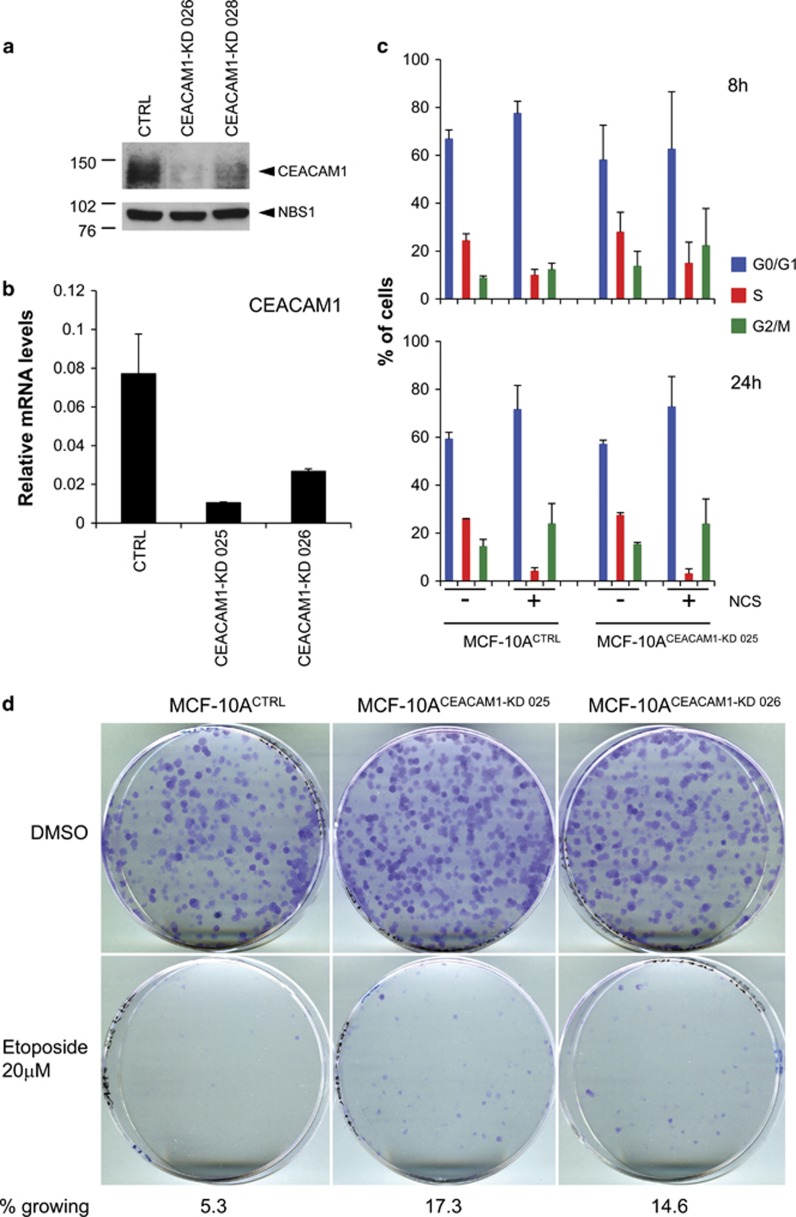Figure 3.
Establishment and phenotype of MCF-10A cells or HCT116 cells with stable silencing of CEACAM1. (a) HCT116 cells stably transfected with CEACAM1 shRNA vector no. 26 (CEACAM1-KD 026), with CEACAM1 shRNA vector no. 28 (CEACAM1-KD 028) or with a control shRNA vector (CTRL) were lysed and analyzed for CEACAM1 or NBS1 expression levels by western blotting. One of two experiments with similar results is shown. (b) MCF-10A cells stably transfected with CEACAM1 shRNA vector no. 25 (CEACAM1-KD 025), with CEACAM1 shRNA vector no. 26 (CEACAM1-KD 026) or with a control shRNA vector (CTRL) were analyzed for CEACAM1 mRNA levels by quantitative real-time PCR. Error bars indicate s.d.; n=2. (c) MCF-10A cells stably transfected with CEACAM1 shRNA vector no. 25 (MCF10ACEACAM1−KD 025) or with a control shRNA vector (MCF10ACTRL) were incubated in the presence or the absence of NCS 1.47 nM for the indicated time points, labeled with BrdU (10 μM, 20 min), fixed with ice-cold ethanol and treated for analysis of the cell cycle phase distribution by flow cytometry using a FACSCalibur apparatus (Becton-Dickinson Biosciences, Le Pont-De-Claix Cedex, France). At least 104 events were recorded and data analysis was done with CellQuest Pro software (Becton-Dickinson Biosciences). (d) MCF-10A cells stably transfected with CEACAM1 shRNA vector no. 25 (CEACAM1-KD 025), with CEACAM1 shRNA vector no. 26 (CEACAM1-KD 026) or with a control shRNA vector (CTRL) were seeded in 60 mm Petri dishes at the density of 1500 cells/dish. On the following day the cells were treated with the indicated dose of etoposide for 1 h, washed with phosphate-buffered saline, and allowed to grow in new medium at 37 °C. After 7 days, the colonies were fixed with methanol, stained with crystal violet, and counted.

